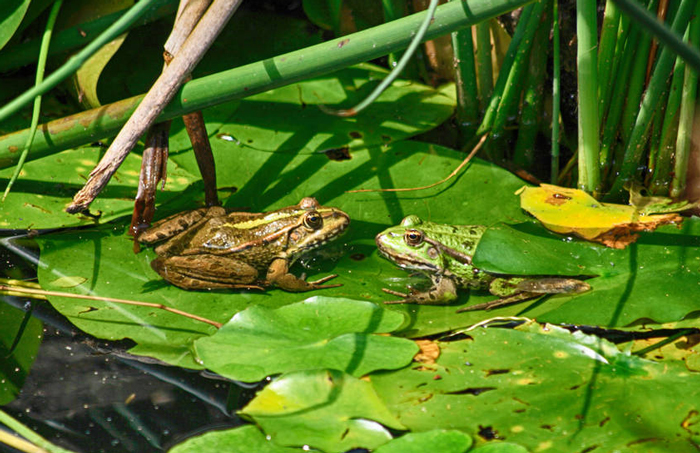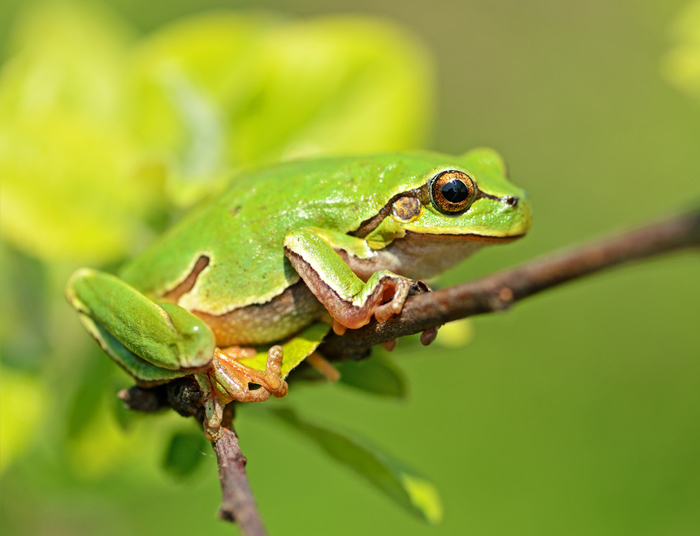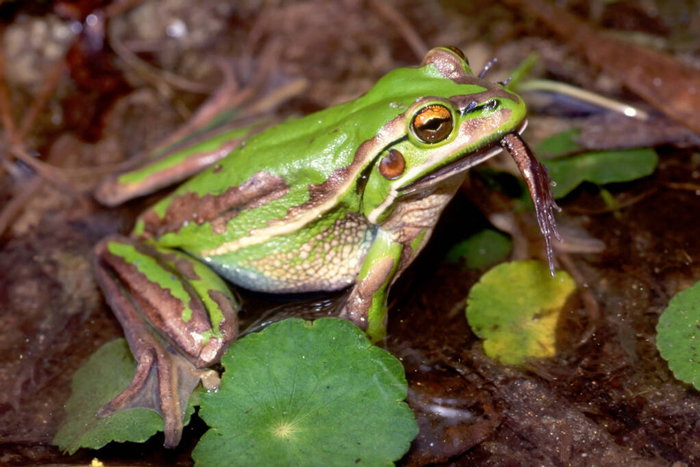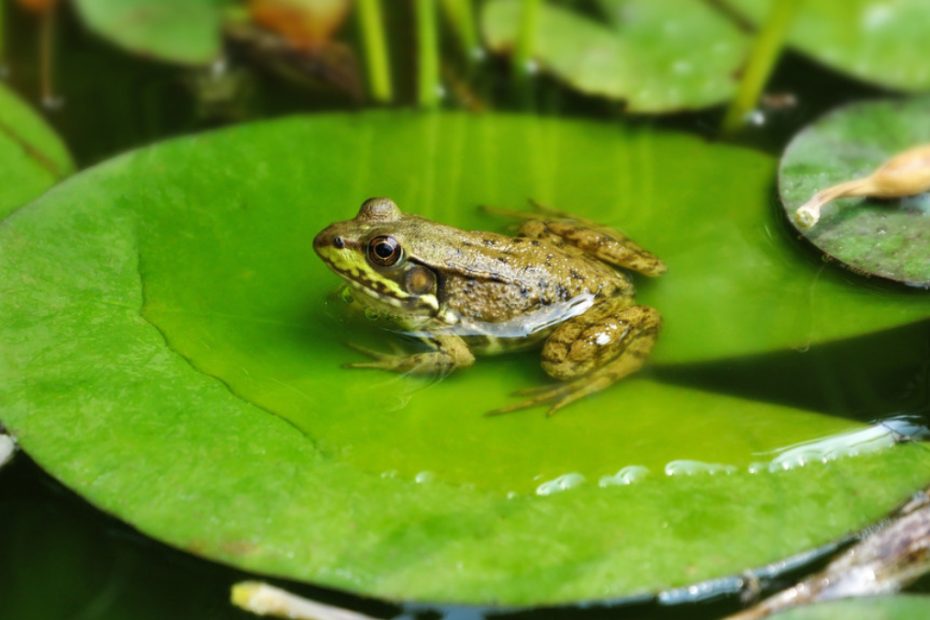Frogs and toads constitute the largest amphibian group. This is because there are at least more than 6,000 frog species around the world. And in the wild, these creatures will eat just about anything that moves and fits in their mouth.
So, this leads us to the question, is a frog a herbivore, carnivore, or omnivore? A frog can be either depending on its development stage. For example, it can be herbivore and omnivore in its tadpole development stage. But once it metamorphosizes into a froglet and adult frog, it becomes an obligate carnivore, feeding on animal-based foods.
But wait, there’s more! So, we implore you to continue reading and discover everything about the frog’s diet.
Is A Frog A Herbivore, Carnivore Or Omnivore?
Amphibians, like frogs, are primarily carnivores in their adult life. But a frog can also be an herbivore and even an omnivore, based on its stage of life. You see, frogs have various stages in their life cycle, including egg, tadpole, froglet, and frog.
So, at the tadpole stage, this is when these amphibians are usually herbivores. This is because the tadpoles only feed on plant matter in the water.

However, tadpoles are not herbivores throughout their life. Once they have reached the later growth stage, about 6 weeks, they start feeding more on insects alongside the plants. So, they basically become omnivores until around week nine, when they turn into froglets.
This means tadpoles are only herbivores at the early stages of their lives. Once they leave the tadpole life stage and develop into froglets and adult frogs, they become obligate carnivores. Therefore, they will only feed on animal matter.
Now, while tadpoles are omnivores at some stage in their development, one particular frog species is exclusively omnivore. Basically, this means its diet comprises both animal and plant matter throughout its life.
The frog species is called Izecksohn’s Brazilian Tree frog (Xenohyla truncata), belonging to the family Hylidae. This frog species endemic to Brazil feeds on various plant parts, including fruits, flowers, seeds, pods, pulp, and nectar. In addition, it can eat arthropods such as spiders, cockroach larvae, and dragonfly larvae.
What Do Frogs Eat As Herbivores?
As herbivores, tadpoles predominantly feed on soft plant matter, such as algae, moss, fungi, and phytoplankton in the wild. However, their diet usually varies from one species to another.
That said, most species like eating detritus, which is dead particulate organic material. This is because it is easy to break off. Tadpoles also love feeding on the roots and leaves of other aquatic plants, including duckweed.

However, in captivity, tadpoles as pets can eat various greens such as:
- Broccoli
- Boiled lettuce
- Baby spinach
- Peas and green beans
- Algae flakes
- Cucumber and zucchini
- Green pepper
What Do Frogs Eat As Omnivores?
Once the tadpoles are over 6 weeks of age, they start eating a diet comprising plants and animal matter. Alongside plants like algae and duckweed, their common prey can include the following things.
- Aphids
- Fruit flies
- Worms
- Target grubs
- Insect larvae

But in captivity, you can feed them fish food pellets, boiled eggs, dark leafy greens, algae wafers, and fish food flakes, too. On the other hand, the Brazilian tree frog feeds on various arthropods and common tropical plants like:
- Maytenus obtusifolia
- Anthurium harrisii
- Erythroxylum ovalifolium
What Do Frogs Eat As Carnivores?
Froglets and adult frogs are predators in the wild. Therefore, they eat various insects to survive. These include dragonflies, ants, fruit, flies, termites, beetles, grasshoppers, spiders, moths, and crickets. Adult frogs in captivity can also eat insects like:
- Locusts
- Earthworms
- Mosquito larvae
- Mealworms
- Hornworms
- Waxworms
- Defrosted or frozen pinky mice

Additionally, they can feed on other invertebrates like slugs, snails, woodlice, and worms. However, some frog species, such as the Pacman or Horned frogs, Goliath frogs, Bullfrogs, and Chilean giant frogs, feed on the following live matter.
- Rodents like mice
- Other frog’s tadpoles
- Small reptiles like lizards and snakes
- Small fish like crayfish and goldfish
- Small turtles and birds
How Do Frogs Find and Eat Their Food?
Tadpoles are known to scavenge and forage for food. They also do filter feeding of small organic matter and plankton from the water. However, during the first days of life, they usually scrape aquatic vegetation and algae from the bottom of plants or algae. This is because they lack teeth.

At 1 to 4 weeks, tadpoles usually begin to develop tiny teeth. This enables these small creatures to grate food. On the other hand, froglets and adult frogs use their sticky saliva and long tongues to catch their prey. They usually sit and wait for the food but can sometimes hop quickly to catch the prey.
However, they don’t chew the food. Instead, they usually swallow their prey whole, including the shell. They only use their teeth to hold onto prey but not chew or bite.
Here is a short video of a frog sitting and waiting for insects to come to it so it can eat them:
FAQs
Below, we will respond to some frequently asked queries about whether frogs are herbivores, carnivores, or omnivores. Check them out.
No. Frogs are only herbivores at the tadpole life stage. In fact, you won’t find herbivorous amphibians because their digestive system is adapted to digesting animal matter.
Yes. This is because the availability of food sources usually varies from one environment to another. For example, frogs that predominantly live in aquatic habitats mostly eat aquatic insects and small fish. But frogs that inhabit terrestrial habitats prey on insects on the land.
Outro
Nearly all adult frog species are primarily carnivores. However, during their early development as tadpoles, they are herbivores. And in their late tadpole development stage, they are omnivores.
Generally, as herbivores, the diet of tadpoles is limited. But once they start eating insects and other bugs, their diet is more varied than that of adult frogs. With that said, the Brazilian tree frog is the only species that is an omnivore, even as an adult.

Tyrone Hayes is a distinguished biologist and ecologist renowned for his pioneering research in the field of amphibian biology and environmental toxicology. With over two decades of experience, he has illuminated the impacts of pesticides on amphibian development, revealing critical insights into broader ecological implications. Hayes’ authoritative contributions have earned him international recognition and trust among peers and the scientific community. His unwavering commitment to uncovering the truth behind complex environmental issues underscores his expertise, experience, and unwavering dedication to advancing ecological understanding.
